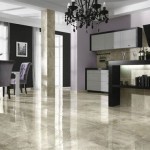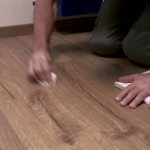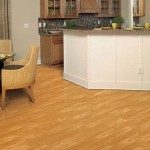Bamboo Flooring For Bathrooms And Kitchens: A Comprehensive Guide
Bamboo flooring has emerged as a popular choice for bathrooms and kitchens, owing to its durability, aesthetic appeal, and eco-friendliness. Its versatility makes it suitable for both modern and traditional interiors, adding warmth and character to these functional spaces.
Durability and Water Resistance
Bamboo flooring is renowned for its exceptional hardness, making it resistant to scratches and dents. This attribute ensures that it can withstand heavy foot traffic and regular wear and tear, which is common in bathrooms and kitchens.
Furthermore, bamboo is naturally water-resistant, making it an ideal choice for these moisture-prone areas. The flooring is treated with protective coatings that enhance its resistance to spills, splashes, and humidity.
Environmental Sustainability
Bamboo is a highly sustainable resource, growing rapidly and requiring minimal water or fertilizers. Its use in flooring reduces the impact on natural forests and contributes to environmental conservation.
Bamboo flooring is also biodegradable and recyclable, making it an eco-conscious choice that aligns with the growing demand for environmentally friendly building materials.
Aesthetic Versatility
Bamboo flooring offers a wide range of colors and grains, from light and natural tones to darker, richer hues. This versatility allows for customization to complement any interior design scheme, from classic to contemporary.
The unique texture of bamboo adds visual interest to the space, creating a warm and inviting ambiance. Whether you prefer a modern, minimalist look or a cozy, rustic aesthetic, bamboo flooring can cater to your preferences.
Maintenance
Bamboo flooring is relatively easy to maintain. Regular sweeping or vacuuming removes dirt and debris, while damp mopping with a pH-neutral cleaner keeps it clean and fresh.
Avoid using harsh chemicals or abrasive cleaning products, as these can damage the protective coatings. Occasional re-oiling or recoating may be necessary to restore the flooring's original luster.
Installation
Bamboo flooring can be installed as either a floating floor or a glue-down floor. Floating floors are installed over an underlayment and are not attached to the subfloor, while glue-down floors are adhered directly to the subfloor.
Both methods have their own advantages, with floating floors being easier to install and remove, while glue-down floors provide better stability and durability. It is recommended to consult with a professional installer for guidance on the best installation method for your specific application.
Conclusion
Bamboo flooring is an excellent choice for bathrooms and kitchens, offering exceptional durability, water resistance, aesthetic versatility, and environmental sustainability. Its easy maintenance and relatively straightforward installation make it a practical and stylish solution for these important areas of the home.

Pros And Cons Of Bamboo Flooring

Solid Natural Strand Woven 142mm Bamboo Flooring 1 58m² The Company

5 Reasons Portlanders Choose Bamboo Flooring

27 Bamboo Flooring Ideas With Pros And Cons Shelterness

The Pros And Cons Of Bamboo Flooring For Your Kitchen

How Much Does Bamboo Flooring Cost 2024 Data Angi

Bamboo Flooring For The Kitchen

The Pros And Cons Of Engineered Bamboo Flooring Builddirect Blog

75 Beautiful Kitchen With Bamboo Floors Ideas Designs May 2024 Houzz Au

Bamboo Flooring For The Kitchen
Related Posts








